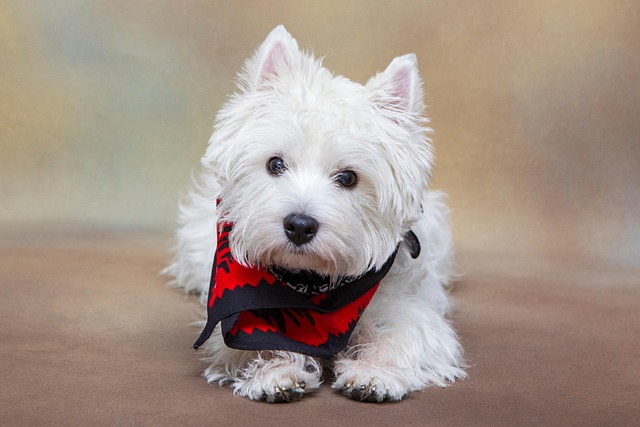
What is glaucoma in a dog?
You might notice your dog squinting more at mealtime or avoiding bright sunlight—these small changes could be early signs of a serious eye condition.
Finding your dog with an open wound can send your heart racing. Whether it’s a scrape from rough play or a more serious cut, knowing how to safely wrap the wound is crucial. Acting quickly while staying calm helps minimize your dog’s stress and prevent complications. But it’s important to remember: first aid is a stopgap measure, not a substitute for veterinary care.
Before you start, gather the right supplies. Skip the household items like cotton balls—loose fibers can stick to the wound. Instead, use sterile gauze pads, medical tape, and a roll of self-adhesive vet wrap. In a pinch, clean white cloth or a clean sock can work, but get to the vet as soon as possible. Gloves are ideal to protect both you and your dog from potential infections.
Approach your dog gently. Use a soothing voice and offer treats if they’re still responsive. Examine the wound carefully without pressing too hard. If it’s actively gushing blood, apply firm but gentle pressure with a clean cloth. Hold it in place for 5-10 minutes—resist the urge to peek, as lifting the cloth can disrupt clotting.
 When it’s time to wrap, start by laying a sterile gauze pad directly over the wound. This creates a barrier against bacteria. Secure it with medical tape on the edges, but avoid wrapping too tightly. You should still be able to slide a finger under the tape. Then, wrap the vet wrap in overlapping layers, starting below the wound and moving upwards in a spiral. The wrap should be snug enough to stay in place but not cut off circulation.
When it’s time to wrap, start by laying a sterile gauze pad directly over the wound. This creates a barrier against bacteria. Secure it with medical tape on the edges, but avoid wrapping too tightly. You should still be able to slide a finger under the tape. Then, wrap the vet wrap in overlapping layers, starting below the wound and moving upwards in a spiral. The wrap should be snug enough to stay in place but not cut off circulation.
In many areas, animal welfare laws require pet owners to seek professional veterinary treatment for serious injuries within a specific timeframe. Ignoring a deep or dirty wound not only risks your dog’s health but could also lead to legal issues. Additionally, some local regulations mandate reporting certain types of animal injuries, especially those caused by other animals.
Keep an eye on the wrapped wound. If it starts bleeding through the bandage, apply more pressure and head straight to the vet. Watch for signs of swelling, redness, or a foul smell—these indicate infection. And remember, dogs are notorious for trying to remove bandages. Using an Elizabethan collar (cone) can prevent them from licking or chewing at the wound, protecting both their recovery and your peace of mind.
While waiting for your vet appointment, document the injury with clear photos. This can help your vet assess the damage and determine the best course of treatment. Every step you take to care for your dog’s wound shows how much you love them, and proper first aid sets the stage for a quicker, smoother recovery.

You might notice your dog squinting more at mealtime or avoiding bright sunlight—these small changes could be early signs of a serious eye condition.

Let’s set the scene: It’s a sweltering Phoenix afternoon—105°F outside—and you rushed your 2-year-old Lab mix, Cooper, on a quick walk to “get it over with.”

Let’s get real: You’re in your Miami apartment, watching your 3-year-old Corgi, Loki, struggle to climb the stairs to your second-floor unit.

Many dog owners brush off occasional scratching as just “dog behavior,” but persistent itching often signals something more—like a food allergy.

You might first notice your dog scratching more than usual—chewing at their paws until the fur looks thin, or rubbing their face against the couch nonstop.

Let’s be real: You’re standing in your Chicago apartment, watching your 3-year-old Beagle, Max, huff and puff just to climb onto the couch.